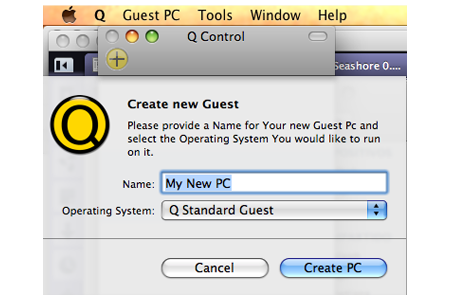

- #MAC PPC EMULATOR MAC OS#
- #MAC PPC EMULATOR PRO#
- #MAC PPC EMULATOR SOFTWARE#
- #MAC PPC EMULATOR CODE#
Speed Emulator's additional performance is particularly obvious in some areas for instance, it significantly speeds up the Apple Event Manager, a feature particularly appreciated by AppleScript users.īoth Apple's and Connectix's emulators imitate a 68LC040, which is a problem if you need to use a 68K program with a program that specifically requires a floating point unit (FPU). (See TidBITS-292.) Speed Emulator is also a DR emulator, and though it uses more memory than Apple's, it also significantly outperforms it and runs on any Power Mac. Also, Apple's DR emulator only works on PCI Power Macs the ROMs of earlier Power Macs don't support it.Ī good alternative is Speed Emulator, part of Connectix's Speed Doubler. However, the DR emulator comes with a slightly higher price in terms of compatibility: programs that do not operate correctly on 68040 machines with their processor caches enabled may not run correctly.
#MAC PPC EMULATOR CODE#
The DR emulator watches the 68K code for loops and stashes the translated PowerPC code for later use, rather than translating the same 68K instructions over and over again. With the PCI Power Macs, Apple introduced a significantly faster dynamic recompilation (DR) emulator. Emulation performance can be improved with larger Level 1 or Level 2 processor caches (emulator performance is better on the PowerPC 603e chip than the original 603 due to a larger Level 1 cache) however, it's also possible to build a smarter emulator.

Apple's original 68K emulator was static, translating 68K instructions to PowerPC code one at a time. Keeping 68K emulation in the system doesn't mean that improvements can't be made. Porting Maelstrom to the PowerPC would be an enormous undertaking yet, more than two years after the introduction of the Power Macintosh, Maelstrom continues to run fine in emulation, and is actually a good test of 68K emulators. A good example is Ambrosia Software's arcade classic Maelstrom, which is largely written in 68K assembly language.
#MAC PPC EMULATOR SOFTWARE#
Almost every Power Mac user owns software written for 68K machines that will never be ported to PowerPC.

Second, Apple has a vested interest in making sure 68K code and applications continue to run. At a basic level, it's not worth the effort to port everything, particularly little-used, non-performance-related portions of the system.
#MAC PPC EMULATOR MAC OS#
If 68K code is so slow, then how long will 68K emulators be around? That's simple: Apple has to keep a 68K emulator in the system forever.įirst, the Mac OS relies heavily on the 68K emulator, and though System 8 will contain substantially more Power Mac-native code than System 7.5.3, it's unlikely the entire operating system will ever be fully native. Thus, even high-end Power Macintoshes are caught in a quagmire of 68K code, reducing their potential real-world performance even when running native applications.
#MAC PPC EMULATOR PRO#
Though some native applications appeared quickly, major tools like QuarkXPress, Microsoft Office, and FileMaker Pro took a while to become Power Mac-native.įurther, though Apple has ported many critical portions of the system software to take advantage of the PowerPC, much of the system still relies on the 68K emulator. When the Power Macs were introduced, Power Mac users often took a step backward in performance because the vast majority of Mac software was only available for 68K machines. At the same time, 68K emulation is also the Achilles heel of the Power Mac because the performance of 68K emulation can't compare to that of native PowerPC code. The 68K emulator enabled Apple to move the Macintosh to a new processor architecture while retaining strong compatibility with existing programs - undeniably a good thing. Without a 68K emulator, non-native programs wouldn't run at all on a Power Mac. If code is written for the PowerPC (such code is considered "native"), the emulator does nothing if the code is written for 68K machines, the emulator translates it to PowerPC code (at a very low level) and passes it to the PowerPC processor. Conceptually, the 68K emulator sits between the PowerPC processor and executing code. Part 2 builds on this information and examines additional software and hardware components of the Power Macintosh.Įmulators Forever - If there's a single thing that made the Power Macintosh successful, it's the 68K emulator built into its system software. If you read the article, your probably know the difference between 68K and PowerPC chips, why clock speed and clock multipliers are important, the difference between Level 1 and Level 2 caches, and the differences among different PowerPC chips. In TidBITS-334, we looked at the PowerPC processor family and some of the terms and technologies associated with it.


 0 kommentar(er)
0 kommentar(er)
